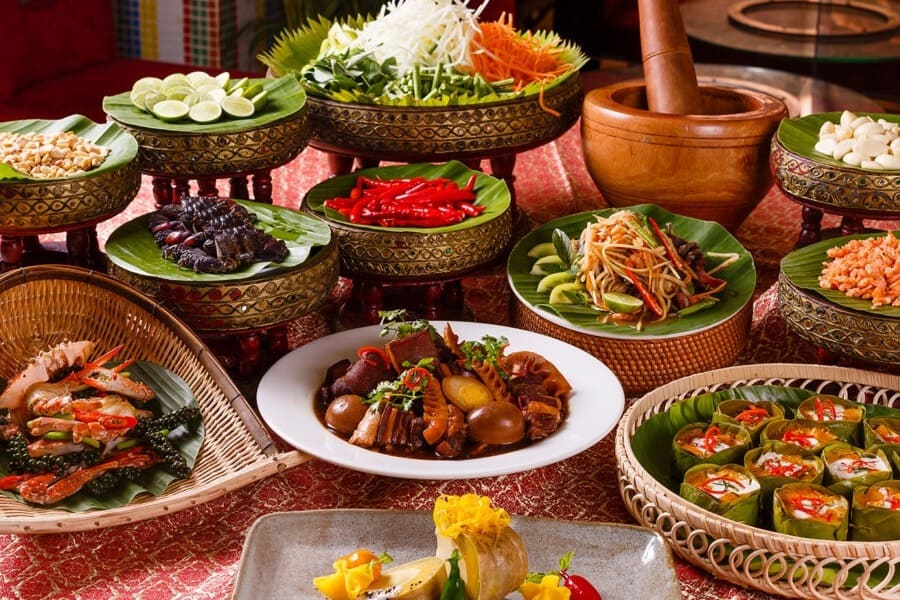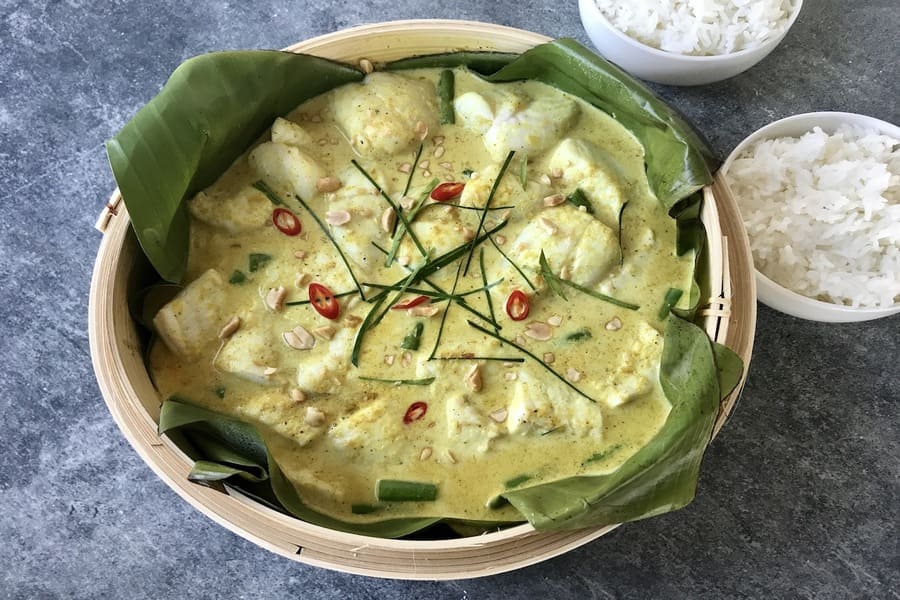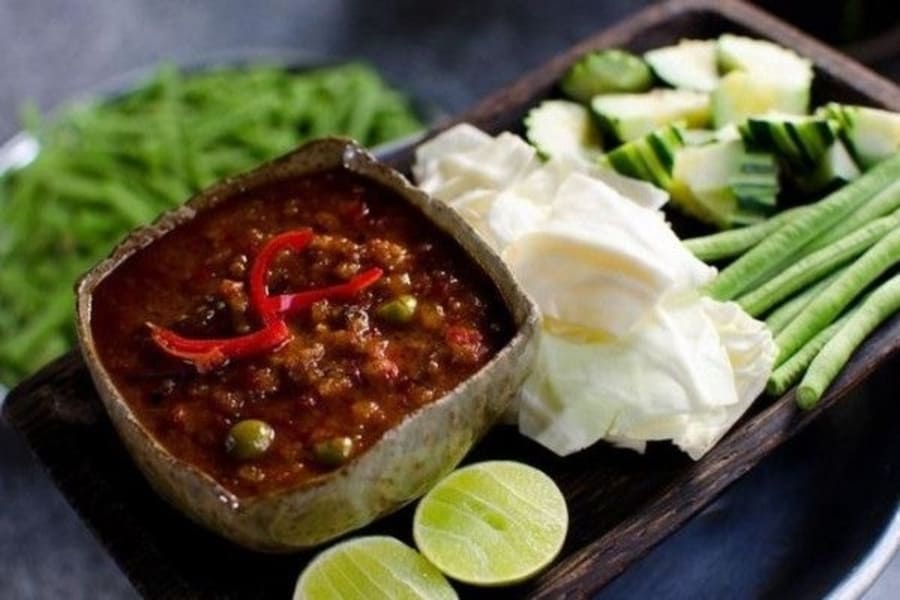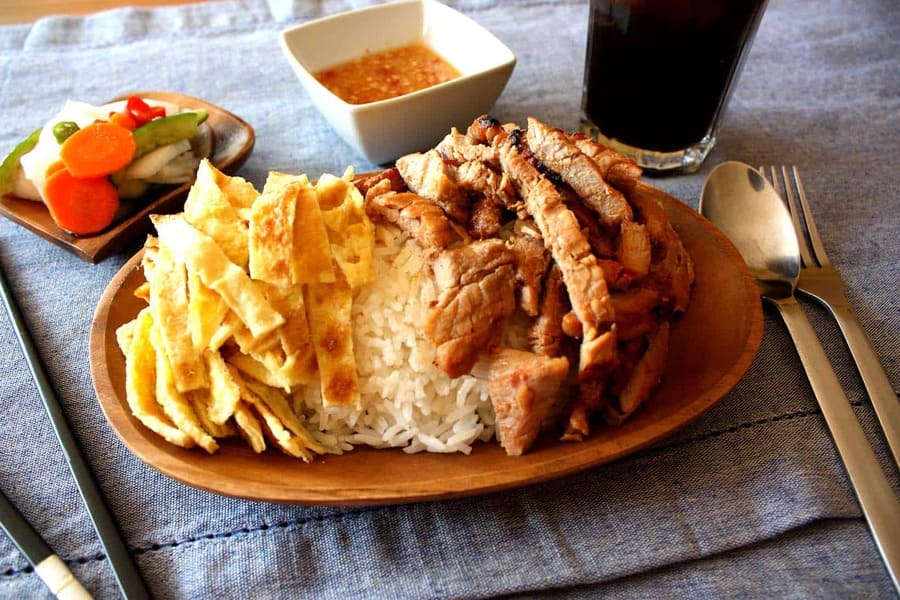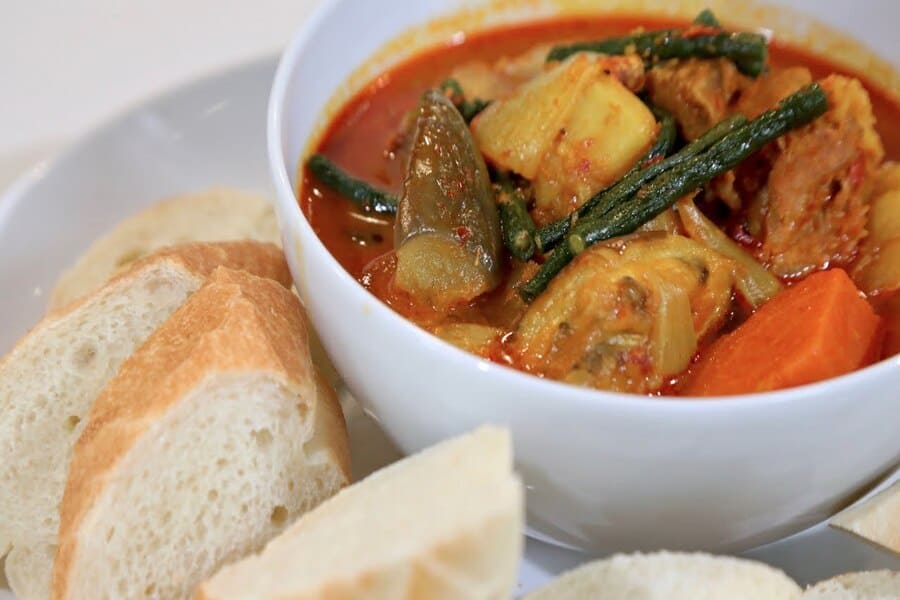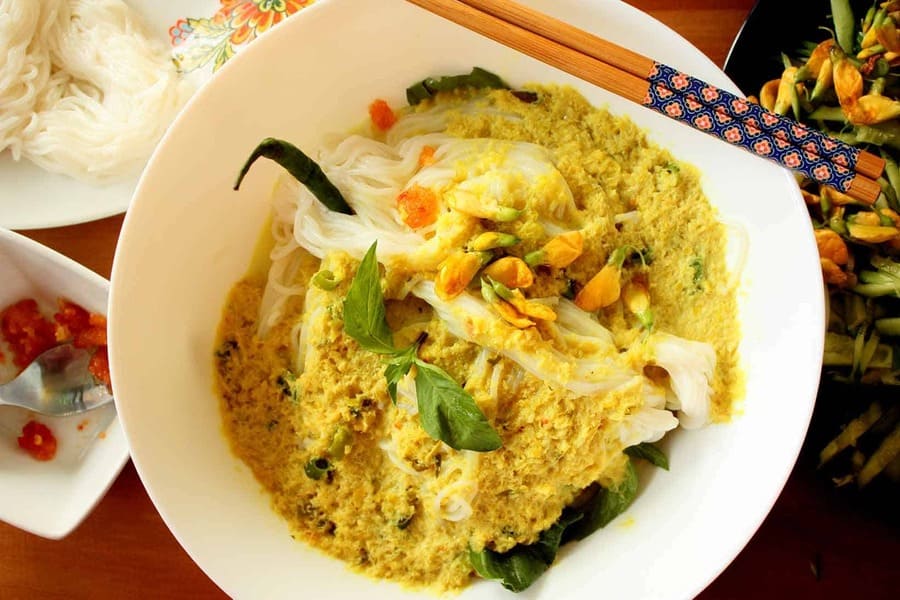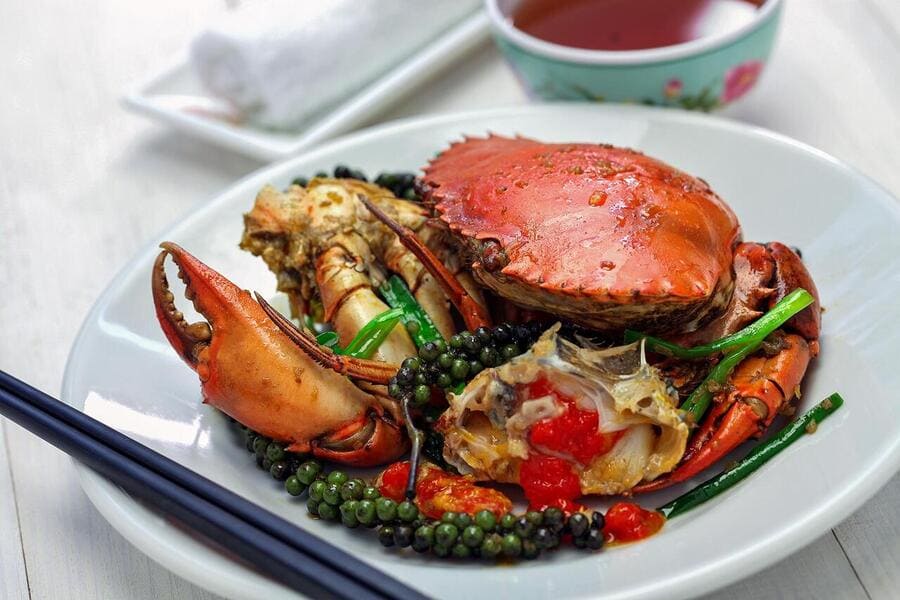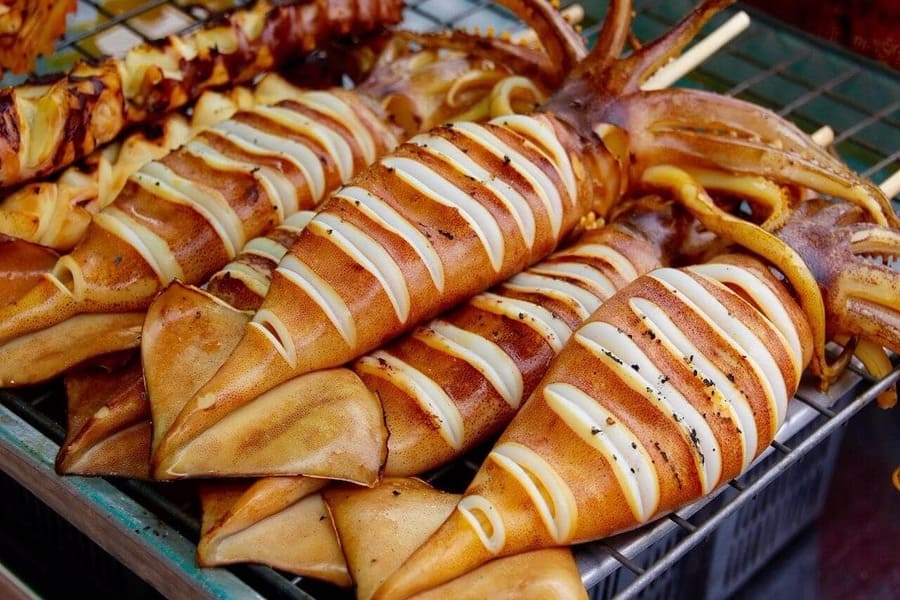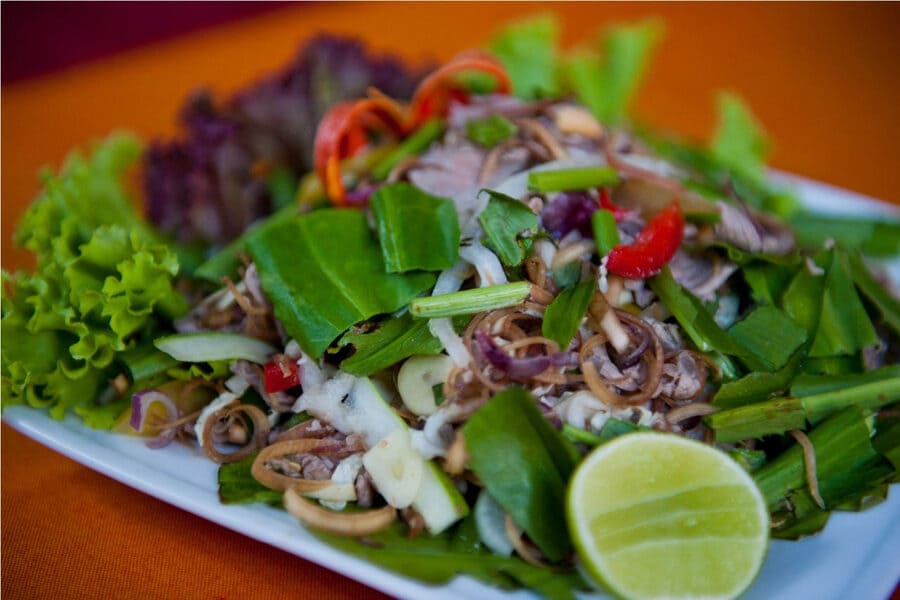In the vibrant tapestry of cambodia tours, one cannot overlook the culinary delights that grace its tables. Traditional Khmer cuisine, deeply rooted in the country's rich history and cultural heritage, offers a tantalizing array of flavors and aromas that captivate the senses. While Laos is known for its own distinctive culinary traditions, it also shares a culinary connection with its neighbor Cambodia, particularly evident in the influences found in traditional Laotian dishes.
Contents [hide]
Amok fish
Amok fish is a quintessential Cambodian dish that embodies the rich culinary heritage of the country. This delicacy features tender pieces of fish, typically freshwater fish like catfish or snakehead, enveloped in a luxuriously creamy coconut milk-based curry. Infused with aromatic spices such as lemongrass, galangal, and kaffir lime leaves, amok fish boasts a harmonious balance of flavors that dance on the palate.
Traditionally, the curry is steamed in banana leaves, imparting a subtle earthy aroma to the dish. With its roots deeply embedded in Cambodian history and culture, amok fish is not just a meal but a culinary masterpiece that symbolizes the essence of Cambodian cuisine.
Prahok
Prahok, often hailed as the soul of Cambodian cuisine, is a fermented fish paste that holds a significant place in the culinary history of Cambodia. Dating back centuries, prahok has been a staple ingredient in Khmer cooking, tracing its origins to the Angkorian era. To prepare prahok, freshwater fish, typically small fish like trey riel or trey kroeung, are cleaned, salted, and left to ferment in earthenware jars for several months to a year. During the fermentation process, the fish undergoes a transformation, breaking down into a pungent, savory paste rich in umami flavors.
In Cambodian kitchens, prahok serves as a versatile ingredient, used in a myriad of dishes to impart depth and complexity. It is often incorporated into soups, stews, and dipping sauces, lending its distinctive savory profile to the dish. One of the most beloved prahok-based dishes is prahok k'tis, a flavorful dip made by mixing prahok with minced pork, coconut milk, palm sugar, and aromatic spices, served alongside fresh vegetables.
Bai sach chrouk
Bai Sach Chrouk, a quintessential dish in Cambodian cuisine, boasts a rich history deeply rooted in the country's culinary heritage. Translating to "pork and rice" in English, this dish has been enjoyed by Cambodians for generations and is a beloved staple of the local diet. Bai Sach Chrouk typically consists of thinly sliced pork marinated in a flavorful mixture of garlic, coconut milk, and palm sugar before being grilled or pan-fried to perfection. The pork is then served atop a bed of fragrant rice, often accompanied by pickled vegetables and a side of clear soup.
The origins of Bai Sach Chrouk can be traced back to Cambodia's agricultural roots, where pork was a readily available protein source and rice was a dietary staple. Over time, the dish evolved to incorporate aromatic herbs and spices, reflecting the influence of Khmer culinary traditions. Bai Sach Chrouk holds a special place in Cambodian culture, often enjoyed as a hearty breakfast or a satisfying lunchtime meal.
Kari Saek Mouan
"Kari Saek Mouan" in Khmer, is a flavorful and aromatic dish that holds a significant place in Cambodian cuisine. This dish reflects the influence of neighboring countries like Thailand and Vietnam while maintaining its distinct Khmer identity.
The recipe for Red Curry Khmer typically starts with a fragrant paste made from a blend of lemongrass, galangal, garlic, shallots, kaffir lime leaves, and dried red chilies. This paste is sautéed in oil until fragrant, creating the base of the curry. To this paste, coconut milk is added, along with protein such as chicken, beef, or fish, and vegetables like bamboo shoots, eggplant, and bell peppers. The curry is then simmered until the flavors meld together and the sauce thickens.
The history of Red Curry Khmer is intertwined with Cambodia's cultural and culinary heritage. While curries have been enjoyed in Cambodia for centuries, the introduction of ingredients like lemongrass, galangal, and coconut milk likely came through trade and cultural exchange with neighboring countries. Over time, Cambodian cooks adapted these ingredients to create their own version of curry, incorporating local spices and flavors.
Nom Banh Chok
"Nom Banh Chok," also known as Cambodian rice noodle soup, is a beloved dish in Cambodian cuisine, cherished for its delicate flavors and comforting qualities. This traditional dish has a rich history deeply intertwined with Cambodian culinary heritage and cultural practices.
The recipe for Nom Banh Chok typically begins with freshly made rice noodles, which are hand-pressed and then steamed to perfection. These soft and chewy noodles serve as the foundation of the dish, providing a light and airy texture.
The broth, often the heart of Cambodian soups, is prepared by simmering a variety of aromatic herbs and spices, such as lemongrass, galangal, kaffir lime leaves, and turmeric, in a savory chicken or fish broth. This fragrant broth is then ladled over the rice noodles, infusing them with its robust flavors.
Nom Banh Chok is traditionally served with an array of fresh herbs, vegetables, and condiments, including bean sprouts, cucumber, banana blossom, mint, basil, and lime wedges. Diners are encouraged to customize their soup according to their taste preferences, adding as much or as little of these garnishes as desired.
One of the most iconic aspects of Nom Banh Chok is its accompanying sauce, known as "prahok," a pungent fermented fish paste that adds depth and complexity to the dish. Prahok is often mixed with fresh herbs, chili peppers, garlic, and lime juice to create a tangy and aromatic dipping sauce.
The history of Nom Banh Chok can be traced back centuries, with its origins rooted in Cambodia's agricultural traditions and cultural practices. Historically, Nom Banh Chok was a staple dish enjoyed by Cambodian farmers and villagers, providing nourishment and sustenance during long days of work in the fields.
Kdăm Chaa
"Kdăm Chaa," also known as "Cambodian Stir-Fried Beef," is a classic dish in Cambodian cuisine that offers a tantalizing blend of flavors and textures. This dish is renowned for its simplicity and the way it highlights the natural flavors of its ingredients.
The recipe for Kdăm Chaa typically begins with thinly sliced beef, marinated in a mixture of soy sauce, fish sauce, garlic, sugar, and black pepper. The marinated beef is then stir-fried with an assortment of vegetables such as bell peppers, onions, carrots, and green beans. The dish is cooked over high heat to achieve a perfect balance of tenderness and crispiness.
The history of Kdăm Chaa is rooted in Cambodia's culinary traditions, showcasing the country's use of fresh ingredients and bold flavors. While stir-frying is a cooking technique that has been practiced in Cambodia for generations, the specific combination of ingredients in Kdăm Chaa reflects the influence of neighboring countries like Thailand and Vietnam.
Ang dtray meuk
"Ang dtray meuk," also known as Cambodian grilled squid, is a flavorful and beloved dish that holds a special place in Cambodian cuisine. Its history and recipe reflect the country's rich culinary heritage and coastal influences.
The recipe for Ang dtray meuk begins with fresh squid, typically cleaned and scored to allow for even cooking and absorption of marinade. The squid is then marinated in a mixture of aromatic herbs and spices, which may include garlic, lemongrass, ginger, shallots, chili peppers, and fish sauce. This marinade infuses the squid with layers of flavor, creating a harmonious blend of savory, spicy, and aromatic notes.
Once marinated, the squid is typically grilled over an open flame or on a hot grill, imparting a smoky charred flavor and caramelized exterior to the tender squid flesh. The grilling process enhances the natural sweetness of the squid while adding a delightful smokiness that tantalizes the taste buds.
Ang dtray meuk is often served with a dipping sauce made from lime juice, fish sauce, sugar, garlic, and chili peppers, which adds a tangy and spicy contrast to the grilled squid. Additionally, it may be accompanied by a side of fresh herbs, such as cilantro, mint, and basil, along with crisp lettuce leaves for wrapping.
The history of Ang dtray meuk is deeply rooted in Cambodia's coastal regions, where seafood plays a prominent role in the local diet. Fishermen and coastal communities have been grilling squid over open fires for generations, developing techniques and flavor profiles that have been passed down through the ages.
Lap Khmer
"Lap Khmer," also known as "Cambodian Beef Salad," is a flavorful and aromatic dish that is deeply rooted in Cambodian culinary heritage. This dish offers a delightful balance of savory, sour, salty, and spicy flavors, making it a favorite among locals and visitors alike.
The recipe for Lap Khmer typically starts with thinly sliced beef, which is marinated in a mixture of lime juice, fish sauce, garlic, shallots, sugar, and chili peppers. The beef is then quickly seared or grilled to perfection, resulting in tender and juicy slices.
Once the beef is cooked, it is combined with an assortment of fresh herbs and vegetables, such as mint, cilantro, basil, cucumber, and tomatoes. These ingredients add a refreshing and crisp texture to the dish while enhancing its vibrant flavors.
The history of Lap Khmer can be traced back to Cambodia's rich culinary traditions, where it has been enjoyed for centuries as a flavorful and satisfying meal. The dish reflects the influence of neighboring countries like Thailand and Vietnam, showcasing the region's shared love for bold spices and aromatic herbs.

